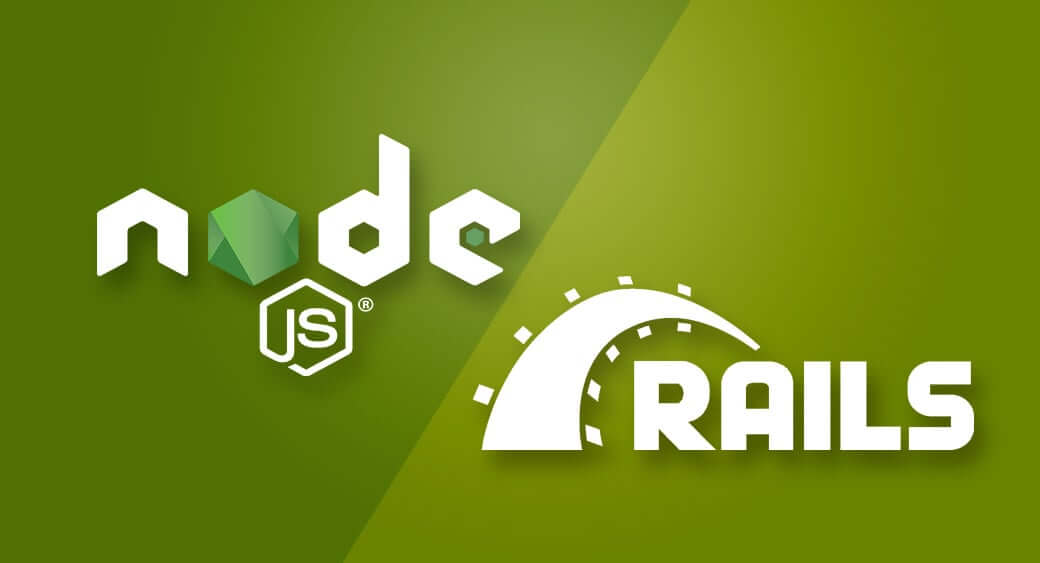
The article describes Node.js and Ruby on Rails as popular web development technologies with different strengths and weaknesses. Node.js excels in high performance and scalability, while Ruby on Rails is favored for rapid development. Both have active communities and job opportunities, but Node.js has recently gained more popularity. In our article, we describe the similarities and differences between these two technologies.
Web development frameworks have revolutionized the way web applications are built today. Node js vs Ruby on Rails are two popular web development technologies widely used to build scalable and high-performance applications.
Both technologies have their strengths and weaknesses, making it crucial to choose the one that best fits your project requirements. In this article, we’ll take a closer look at the top features of Ruby on Rails and Node.js and compare them in terms of performance, community, job opportunities, scalability, and popularity.
Top Features of Ruby on Rails
Ruby on Rails is a popular web development framework used to build many successful web applications. Here are some of the top features of Ruby on Rails:
MVC Architecture
Ruby on Rails is based on the Model-View-Controller (MVC) architecture, which separates the application logic, user interface, and data storage into separate components. This makes it easier to maintain and scale the application over time.
Active Record
Active Record is a key component of Ruby on Rails that provides an object-relational mapping (ORM) layer. It allows developers to interact with the database using Ruby code rather than SQL queries, which makes database operations more intuitive and less error-prone.
Convention Over Configuration
Ruby on Rails follows the principle of “convention over configuration,” which means that the framework makes assumptions about how the application should be structured and configured, so developers can focus on writing code rather than configuring the framework.
Automated Deployment
Ruby on Rails has built-in support for automated deployment using tools like Capistrano and Heroku. This makes it easier to deploy and maintain the application in production environments.
Top Features of NodeJS
Node.js is a robust and widely used open-source server-side runtime environment built on top of Google’s V8 JavaScript engine. It has gained immense popularity recently due to its exceptional features and ability to build scalable network applications. Here are some of the top features of Node.js:
Cross-Platform Compatibility
Node.js is designed to work seamlessly across various operating systems, including Windows, macOS, and Linux. This cross-platform compatibility makes developing and deploying applications on any platform of choice more accessible.
One Coding Language for Front End and Back End
With Node.js, developers can use the same programming language (JavaScript) for both front-end and back-end development, making it more efficient and easier to maintain. This also enables developers to work on client- and server-side applications easily.
V8 Engine
Node.js is built on top of the V8 JavaScript engine, which provides lightning-fast performance and makes it an ideal choice for building high-performance applications that handle large amounts of data.
Quick Deployment and Microservice Development
Node.js provides fast and easy deployment options for applications. It comes with built-in package management tools like npm, simplifying the deployment process and making it quicker and more efficient. It is ideal for building microservices-based architectures, an increasingly popular approach to building scalable, modular applications. This architecture enables developers to build smaller, independent components of an application, making it easier to maintain and update.

Node.js vs. Ruby on Rails: Head-to-Head Comparison
Node.js and Ruby on Rails are two popular web development technologies. Both have strengths and weaknesses, and choosing between them depends on your specific project requirements.
One of the expert companies that can help you choose a necessary tech stack for your project is Sloboda Studio, a full-cycle software development company. They’ve been building products on Ruby on Rails for over 12 years and have a fair share of Node.js projects. Contact them to get a free consultation.

Here’s a head-to-head comparison between the two:
Performance
Node.js is known for its high performance and scalability. It uses a non-blocking I/O model that allows it to handle many concurrent connections without slowing down. On the other hand, Ruby on Rails can be slower due to its heavy use of abstractions and dynamic typing.
Community
Both Node.js and Ruby on Rails have active and supportive communities. Node.js is backed by tech giants like Microsoft and IBM and has a large and growing community of developers. Ruby on Rails has a smaller community but is still active and supportive, with many open-source libraries and frameworks available.
Job Opportunities
Both Node.js and Ruby on Rails are in demand in the job market. Node.js is often used to build scalable and real-time applications, while startups favor Ruby on Rails for its rapid development capabilities. However, Node.js has a slight edge due to its wider adoption and community.
Scalability
Node.js is built for scalability and can handle a large number of connections with ease. It’s also designed to work well with microservices and distributed systems. On the other hand, Ruby on Rails can be challenging to scale due to its reliance on traditional MVC architecture.
Popularity
Node.js and Ruby on Rails are popular technologies, but Node.js has gained more popularity in recent years due to its performance and scalability. Companies like Netflix, LinkedIn, and Uber use it. Ruby on Rails is still famous, particularly in the startup scene, but it’s growing slower than Node.js.
Summary
In conclusion, both Node.js and Ruby on Rails are powerful technologies that can be used to build robust web applications.
Node.js is known for its high performance and scalability, while Ruby on Rails offers rapid development capabilities. Choosing between the two depends on your specific project requirements.
If you need high performance and scalability, Node.js might be the right choice. Ruby on Rails might be the better option if you need to build applications rapidly.
Ultimately, both technologies have unique features and benefits, making them popular choices in web development.
Samuel Njoroge
Related posts
Stay connected
- How LoveOn Chat Is Becoming the Most Versatile AI Companion for Digital UsersThe internet keeps shifting toward hyper-personal interaction, and AI companions are at the center of this shift. What used to be simple chatbots are now evolving into emotionally aware, adaptive, and multi-functional digital partners. Among the new generation of platforms, LoveOn Chat is becoming one... The post How LoveOn Chat Is Becoming the Most Versatile […]
